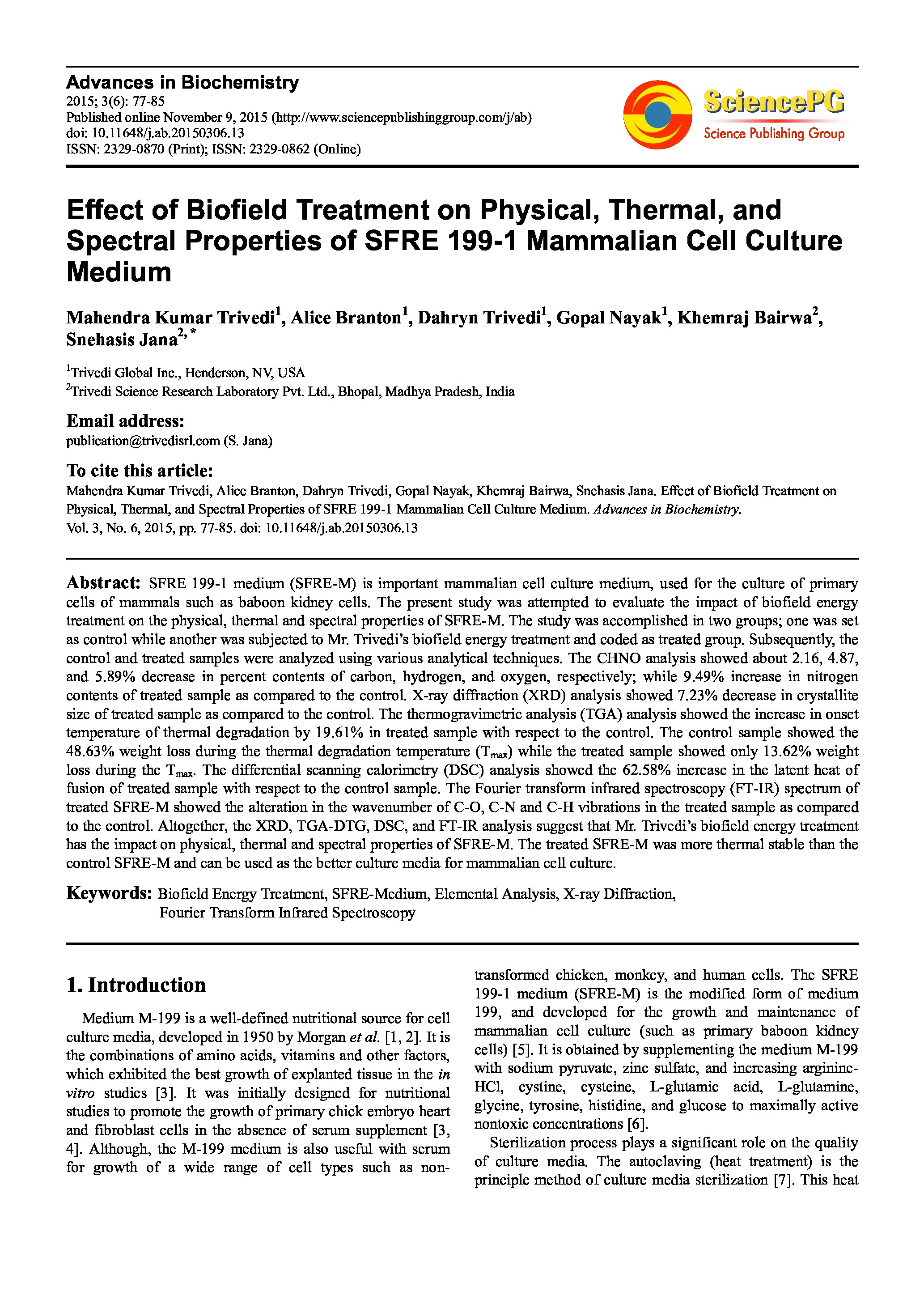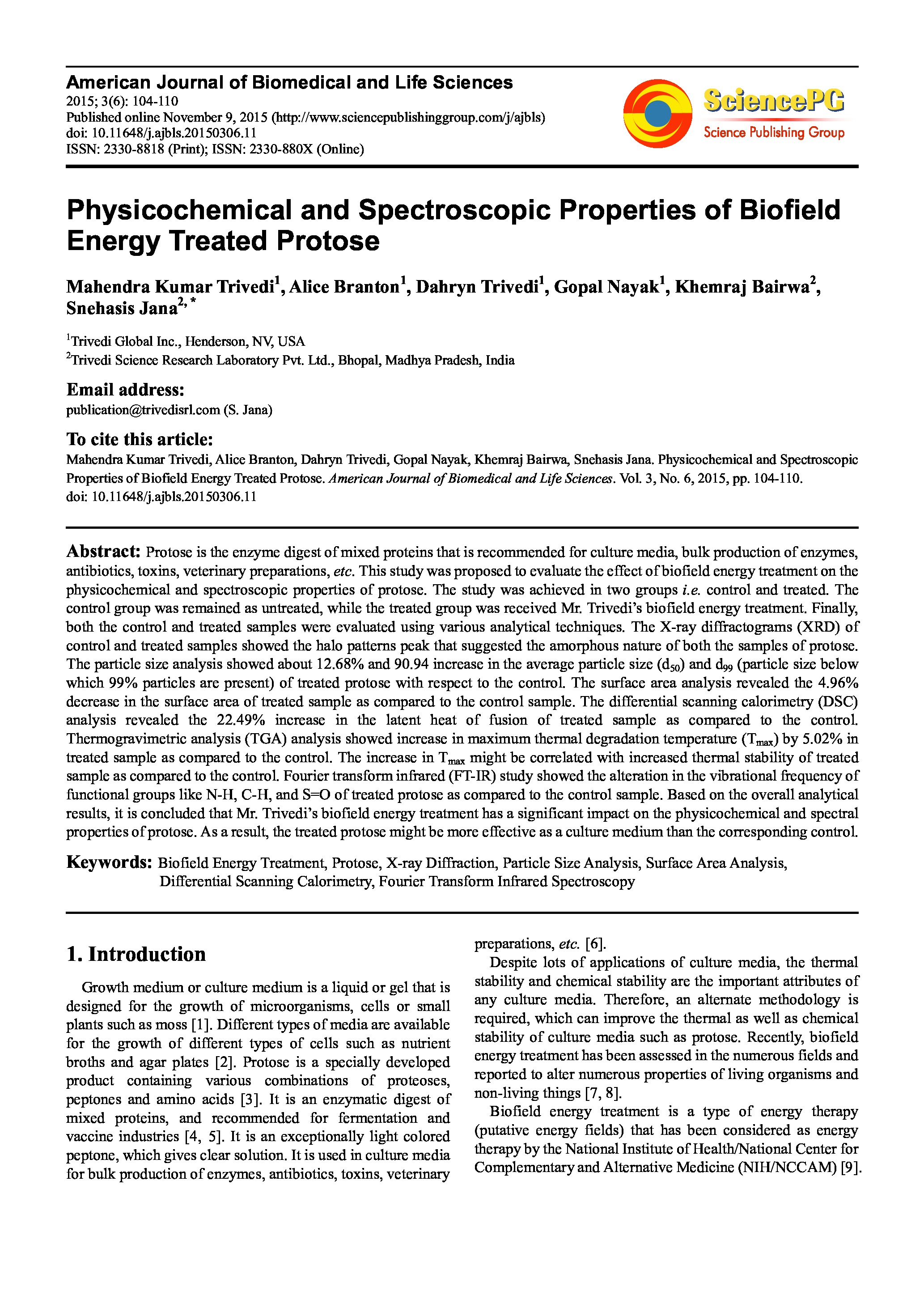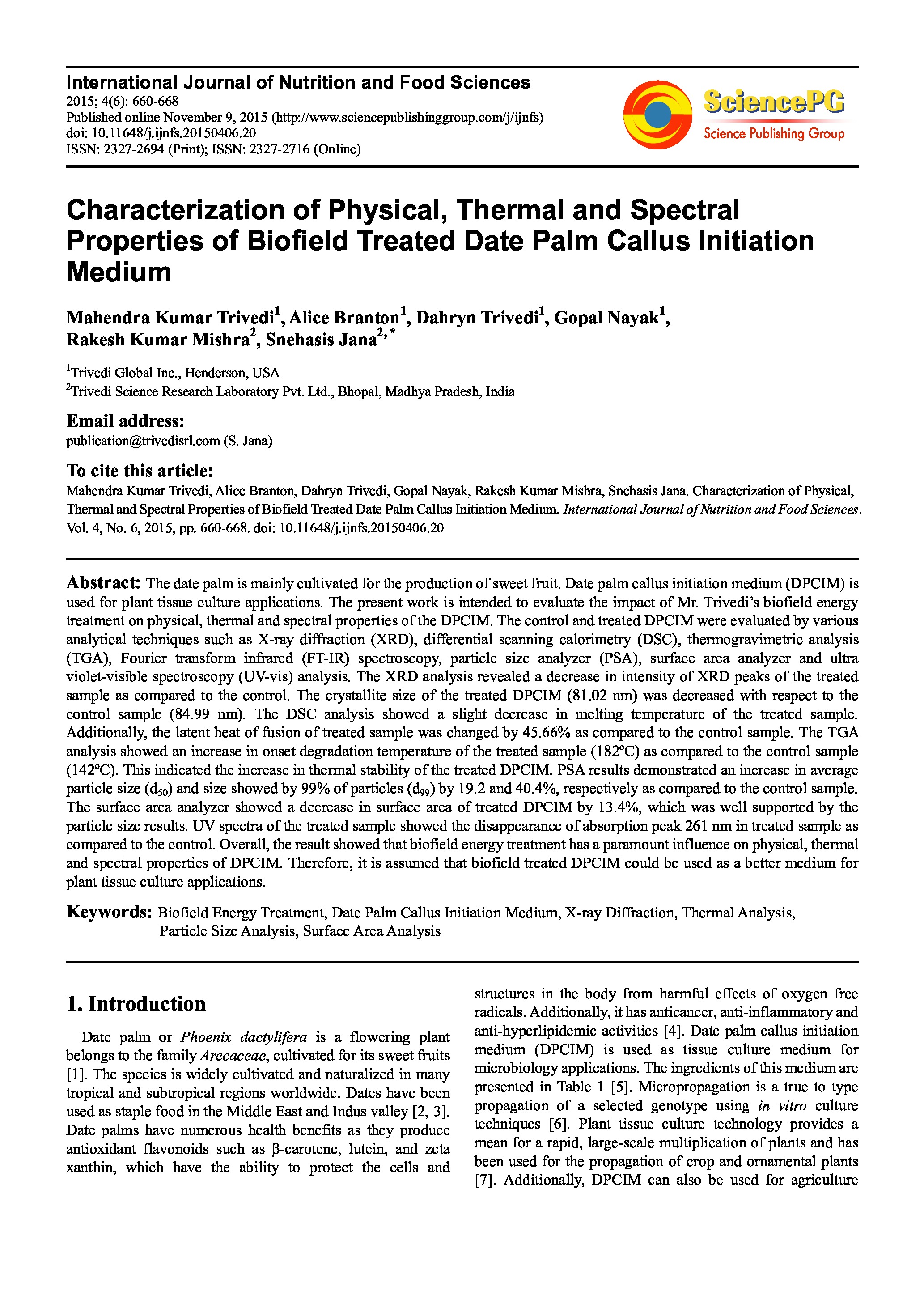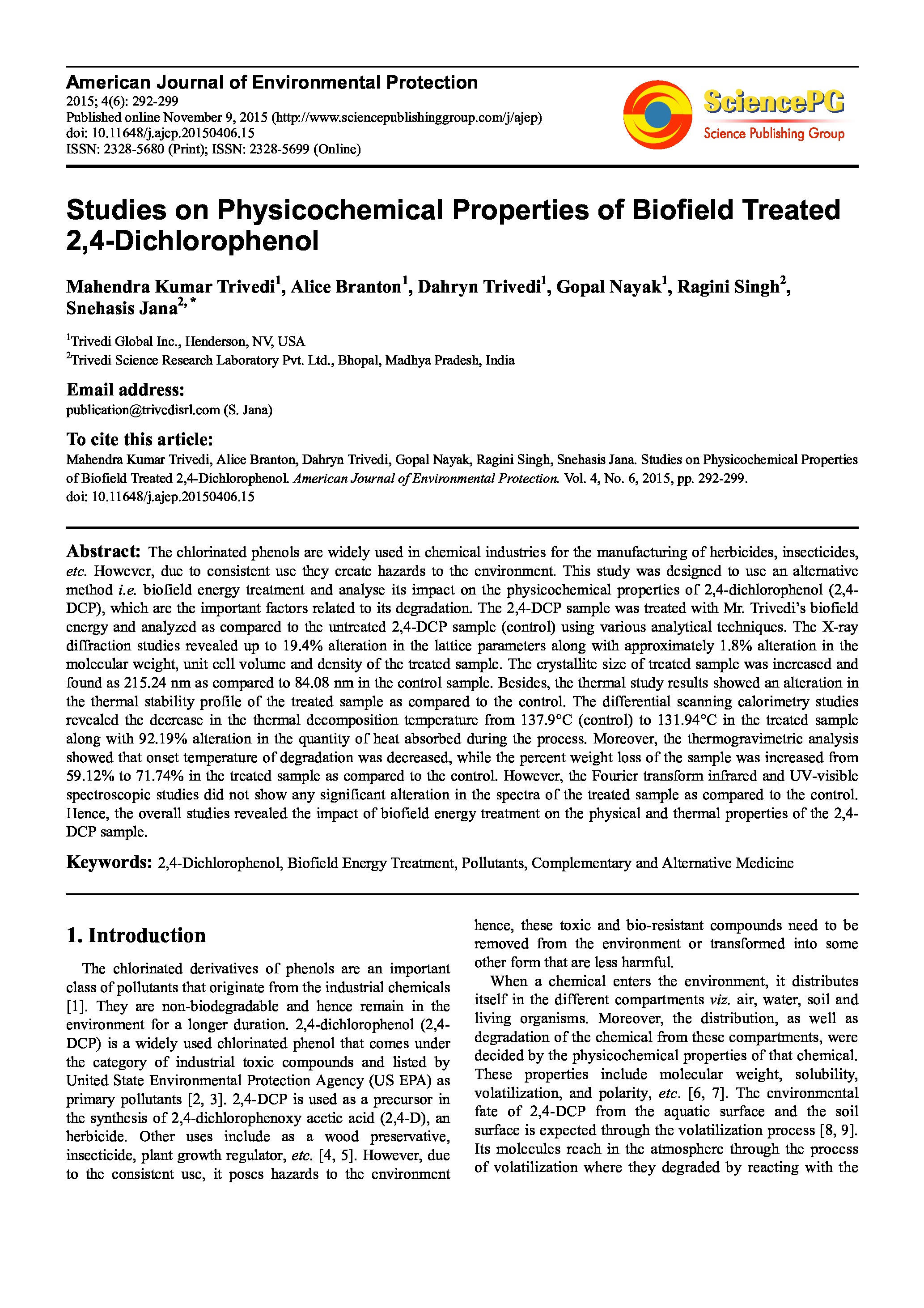Date of upload:
21.12.2016
Co-author:
Mahendra Kumar Trivedi, Dahryn Trivedi, Gopal Nayak, Ragini Singh, Snehasis Jana
Abstract:
The chlorinated phenols are widely used in chemical industries for the manufacturing of herbicides, insecticides, etc. However, due to consistent use they create hazards to the environment. This study was designed to use an alternative method i.e. biofield energy treatment and analyse its impact on the physicochemical properties of 2,4-dichlorophenol (2,4-DCP), which are the important factors related to its degradation. The 2,4-DCP sample was treated with Mr. Trivedi’s biofield energy and analyzed as compared to the untreated 2,4-DCP sample (control) using various analytical techniques. The X-ray diffraction studies revealed up to 19.4% alteration in the lattice parameters along with approximately 1.8% alteration in the molecular weight, unit cell volume and density of the treated sample. The crystallite size of treated sample was increased and found as 215.24 nm as compared to 84.08 nm in the control sample. Besides, the thermal study results showed an alteration in the thermal stability profile of the treated sample as compared to the control. The differential scanning calorimetry studies revealed the decrease in the thermal decomposition temperature from 137.9°C (control) to 131.94°C in the treated sample along with 92.19% alteration in the quantity of heat absorbed during the process. Moreover, the thermogravimetric analysis showed that onset temperature of degradation was decreased, while the percent weight loss of the sample was increased from 59.12% to 71.74% in the treated sample as compared to the control. However, the Fourier transform infrared and UV-visible spectroscopic studies did not show any significant alteration in the spectra of the treated sample as compared to the control. Hence, the overall studies revealed the impact of biofield energy treatment on the physical and thermal properties of the 2,4-DCP sample.




